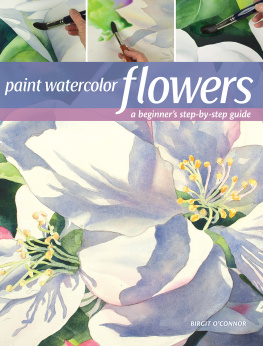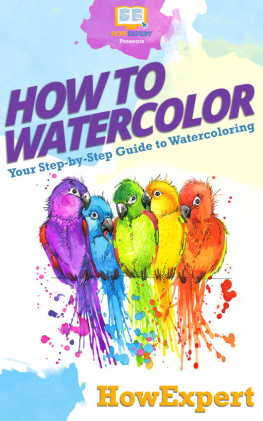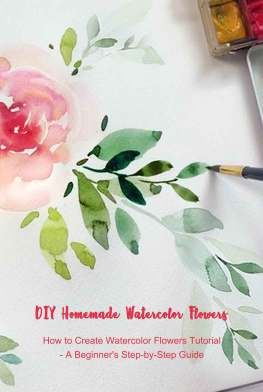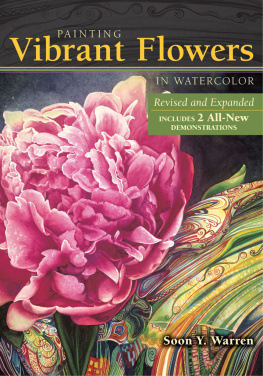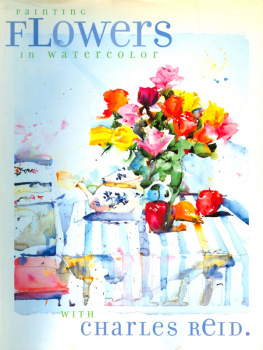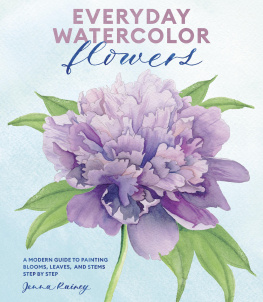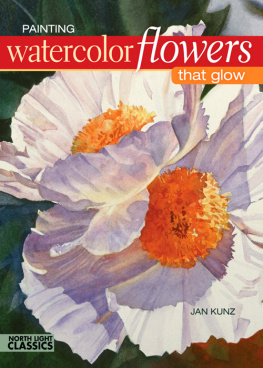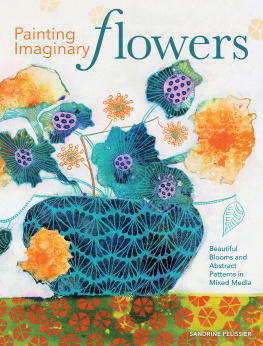Contents
Guide
Paint Watercolor Flowers
Birgit OConnor

CINCINNATI, OHIO
ArtistsNetwork.com
Watercolor Materials You Will Need
These are the materials needed to complete the exercises and demonstrations in this book. I noted the brand I used in parentheses, but use any brand you prefer. For advice on choosing materials, see .
Paper
Cold press (Arches), 140-lb. (300gsm) for practice and 300-lb.
(640gsm) for finished paintings
Brushes
No. 30 natural round
Nos. 8, 14 and 20 sable/synthetic blend round
No. 3 synthetic round
2" (5cm) bamboo hake
Mop or other wash brush (such as Mottler no. 60 synthetic wash brush)
Transparent Watercolors
(all by Winsor & Newton except where noted)
Burnt Sienna Cerulean Blue Cobalt Blue French Ultramarine Blue Green Gold Hansa Yellow Medium* Indanthrene Blue Indian Yellow Indigo Permanent Alizarin Crimson Permanent Rose Permanent Sap Green Quinacridone Gold Quinacridone Magenta Quinacridone Pink* Quinacridone Purple* Transparent Yellow Winsor Blue (Green Shade) Winsor Blue (Red Shade) Winsor Violet (Dioxazine) or Carbazole Violet*
* = Daniel Smith watercolors
Other
Large plastic paint palette (shallow wells, large mixing areas, covered)
Large wash bucket, 12 gallons (48 liters)
Small spray bottle
Terry cloth towels or paper towels
Pencil (2B)Kneaded eraser
Masking fluid or drawing gum (Pebeo)
Masking tool of choice (old brushes, Uggly Brush, Incredible Nib, etc.)
Rubber cement pickup
Original Mr. Clean Magic Eraser (generic name: melamine foam sponge)
Sketchpad/drawing paper
Graphite or transfer paper
Artists tape
Hair dryer (optional)
Finding the Painting Zone
With our everyday lives being so busy, the time and mindset for painting is sometimes hard to find. Here are some ways to help you get there:
- Schedule a painting time and stick to it. Sometimes to start we simply need to slow down, and planning a regular time for painting can help.
- Create a routine. This can be as simple as getting yourself a cup of tea and arranging your paints.
- Turn on some music. Tune in to something that moves you. This distraction can help quiet all the external sounds and internal thoughts that can inhibit painting.
- Close your eyes. Take a moment to look inward to reset your thoughts. Try to have an awareness of allowing creative energy to move through your body. Treat your paint brushes as an extension of that energy.
- Breathe. Are you holding your breath as you paint? This could mean youre trying too hard or struggling with your painting. Inhale deeply through your nose and exhale slowly through your mouth about ten times to help calm your mind and refocus. This works well for any situation.
- Relax. Painting doesnt have to be so serious. If it helps, do something silly or turn up the music and danceanything to let go, change your mood, reduce stress, and set your mind and paintbrush in motion.
- Be kind to yourself. Your time spent painting will not always result in a masterpiece, so when this happens, remember that youre actually expanding, growing and learning.

Contents
Introduction
As you look through these pages, you might, at first glance, think this book is only about painting flowers, but its actually much more than that. The floral compositions presented are just a vehicle for freedom of expression to play with water, color, movement and design.
For some, flowers as a subject matter can seem a little limiting, but your perception is really all in your approach. Exploring exciting compositions and experimenting with the amount of water you use with your paints can dramatically change your perspective.
In general, watercolor is the most fluid and expressive medium. The variety of effects that can be created offer you many ways to express yourself. It can even become an emotional experience. Watercolor moves with or without our help and has the ability to reflect light off the surface of the paper, through transparent layers of paint. The luminous color that results is well suited for the beautiful blooms we will paint.
All the techniques used throughout this book are universal and can be applied to other subjects, such as landscapes and still lifes. Lots of people think they cant use watercolor or that its too hard, but it really is all in how you approach it. Nothing compares to this medium, and once you learn the techniques, you can allow yourself the freedom to explore, have fun and find your creative artist within.
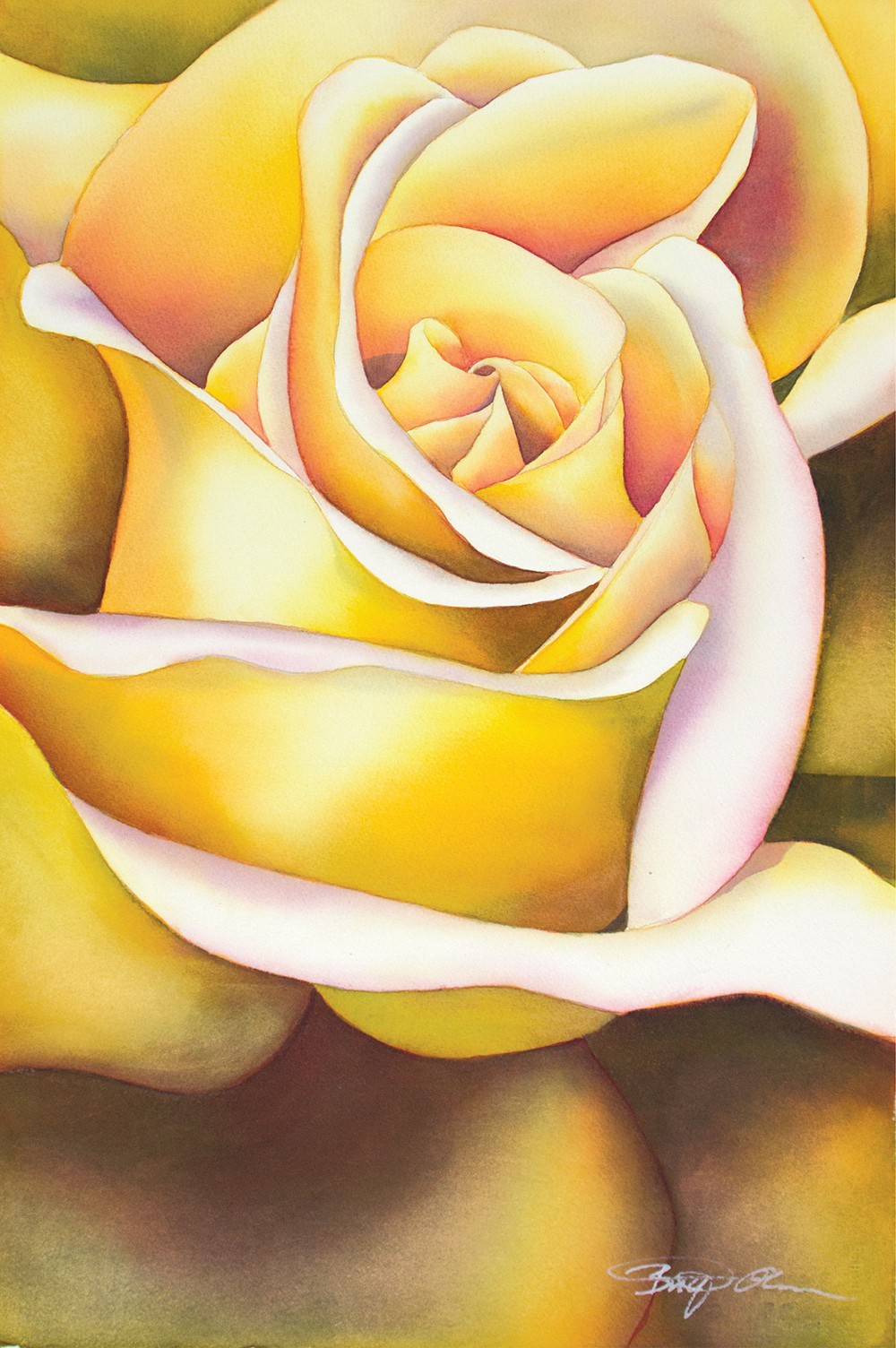
Golden Rose
Watercolor on 300-lb. (640gsm) cold-pressed paper
22" 15" (56cm 38cm)
Chapter 1
Getting Ready to Paint
When I first started painting, I began with a colorful sixteen-pan watercolor set by Prang along with a pad of student-grade watercolor paper. At that time, I really didnt think there would be that much of a difference in the quality of the materials, only in price. The color set looked bright enough and came with what seemed to be a suitable brush, and the paper I bought said it was for watercolor, so that must be all I needed and I was on my way.
Then, when painting, I just couldnt understand why my colors did not look cleanin fact, they always appeared muddy. When I struggled to keep them light and transparent, they turned out weak and wimpy, and any that I tried to darken ended up thick and pasty.
I didnt realize that many of the problems I was having were actually in the materials I was using. As with anything, the tools you use contribute to the outcome of your success.
When starting out, if possible, begin with the best artist-grade materials you can afford. This doesnt mean you have to use the most expensive brand of brush, the highest quality of pigment, or the heaviest weight paper, but use materials that fall somewhere in between beginner and professional quality. Student-grade supplies can be cheaper to purchase, but they can also make it challenging to get the results you want. They just dont react the same way artist-grade materials do.
If youre thinking that youd like to try the medium before making a large investment and you need to work within a budget, start with a good student-grade brand of paint (tubes, not pans), at least one good sable/synthetic blend brush (a no. 12 or no. 14 round), and artist-grade paper in a lighter weight or even a block. One reason to buy better paper is because the student-grade often contains mostly wood pulp and has a tendency to curl, so when layering color on it, the surface does not accept water and paint in the same way. Color can lift easily and mix with previous layers, resulting in a muddy, unattractive look.
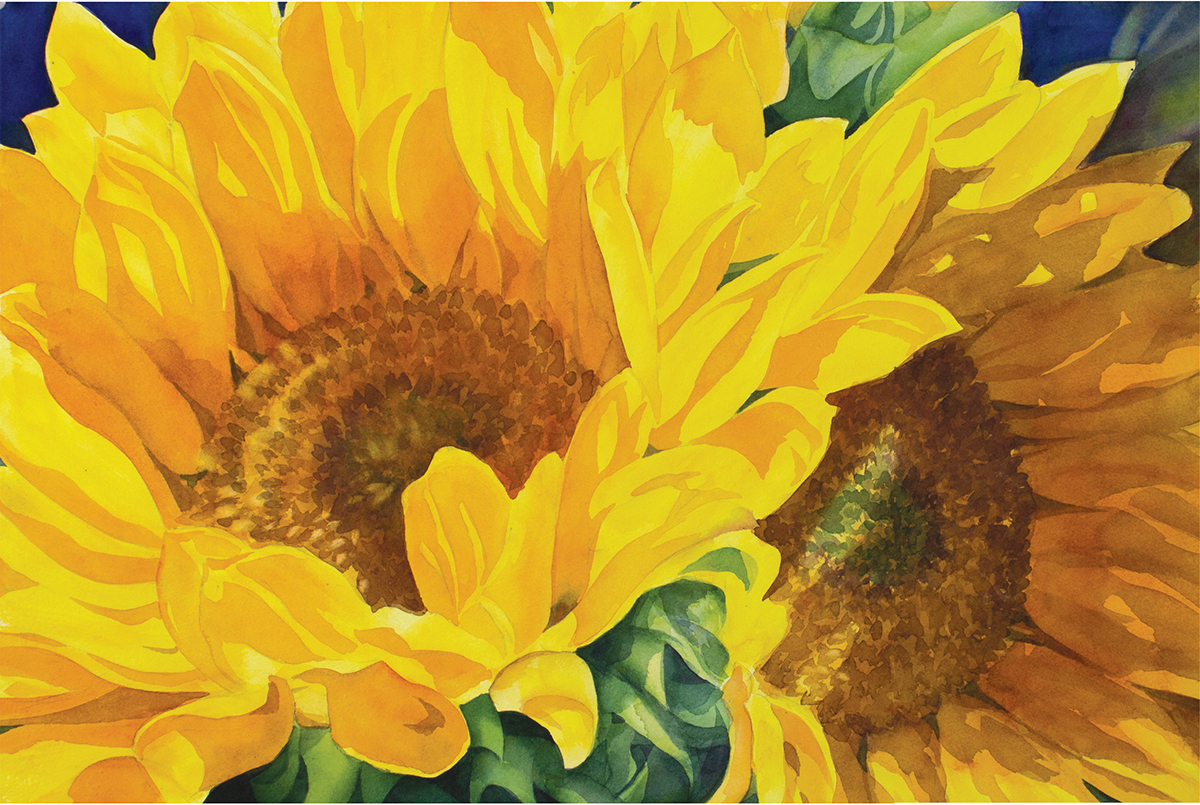
Sunflower
Watercolor on 300-lb. (640gsm) cold-pressed paper
15" 22" (38cm 56cm)

